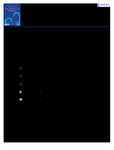Effective maritime cybersecurity regulation – the case for a cyber code
| dc.contributor.author | Hopcraft, Rory | |
| dc.contributor.author | Martin, KM | |
| dc.date.accessioned | 2021-08-09T10:12:05Z | |
| dc.date.available | 2021-08-09T10:12:05Z | |
| dc.date.issued | 2018-09-02 | |
| dc.identifier.issn | 1948-0881 | |
| dc.identifier.issn | 1948-108X | |
| dc.identifier.uri | http://hdl.handle.net/10026.1/17418 | |
| dc.description.abstract |
Ships and ports are increasingly connected to each other through cyberspace. This connectivity streamlines many aspects of maritime business, but also exposes maritime operators and administrations to new types of risk including hacking and outage. The maritime industry has been slow to realize the implications of this new environment within which it operates, and now lags behind other industries (like aviation) when it comes to cyber risk mitigation and regulation. We argue that the International Maritime Organisation (IMO), alongside its members, urgently needs to create robust and resilient cybersecurity regulations. We suggest that the IMO should consider creating a standalone Cyber Code, based on a framework created by previous IMO Codes such as the Polar Code. Since the IMO uses Codes as a legally binding instrument, this would help to ensure the continued safety and efficiency of the maritime industry in the face of threats from cyberspace. | |
| dc.format.extent | 354-366 | |
| dc.language | en | |
| dc.language.iso | en | |
| dc.publisher | Informa UK Limited | |
| dc.rights | Attribution 4.0 International | |
| dc.rights | Attribution 4.0 International | |
| dc.rights.uri | http://creativecommons.org/licenses/by/4.0/ | |
| dc.rights.uri | http://creativecommons.org/licenses/by/4.0/ | |
| dc.title | Effective maritime cybersecurity regulation – the case for a cyber code | |
| dc.type | journal-article | |
| dc.type | Journal Article | |
| plymouth.issue | 3 | |
| plymouth.volume | 14 | |
| plymouth.publication-status | Published | |
| plymouth.journal | Journal of the Indian Ocean Region | |
| dc.identifier.doi | 10.1080/19480881.2018.1519056 | |
| plymouth.organisational-group | /Plymouth | |
| plymouth.organisational-group | /Plymouth/Faculty of Science and Engineering | |
| plymouth.organisational-group | /Plymouth/Faculty of Science and Engineering/School of Engineering, Computing and Mathematics | |
| plymouth.organisational-group | /Plymouth/Faculty of Science and Engineering/School of Engineering, Computing and Mathematics/SoECM - Manual | |
| plymouth.organisational-group | /Plymouth/Users by role | |
| plymouth.organisational-group | /Plymouth/Users by role/Academics | |
| dc.identifier.eissn | 1948-108X | |
| dc.rights.embargoperiod | Not known | |
| rioxxterms.versionofrecord | 10.1080/19480881.2018.1519056 | |
| rioxxterms.licenseref.uri | http://creativecommons.org/licenses/by/4.0/ | |
| rioxxterms.type | Journal Article/Review |



